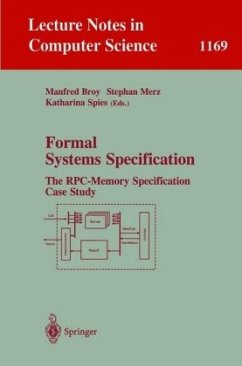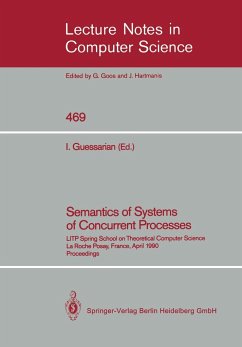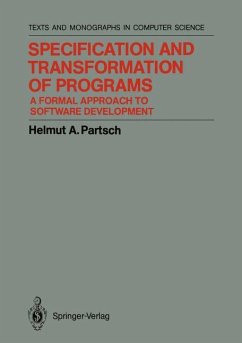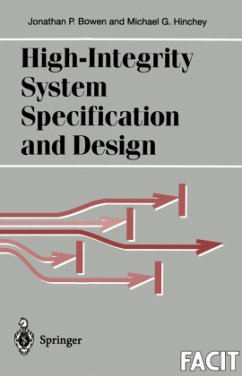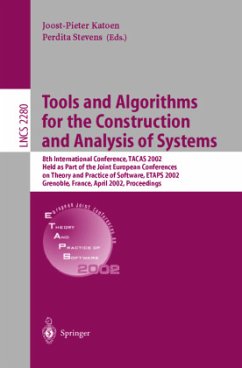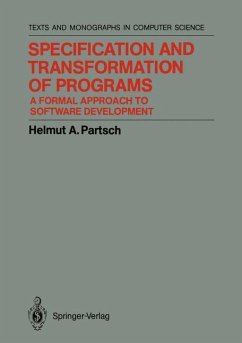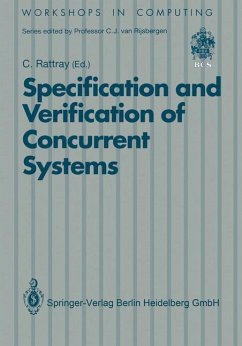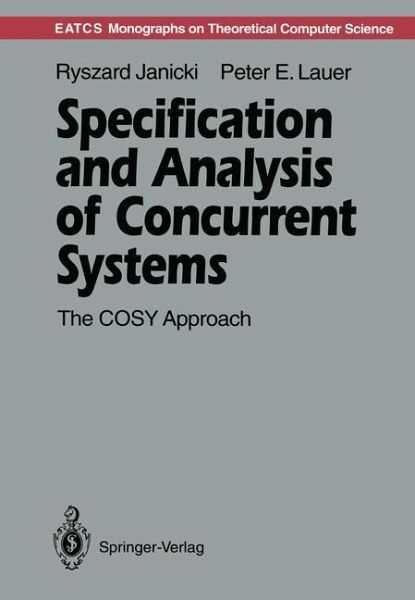
Specification and Analysis of Concurrent Systems
The COSY Approach

PAYBACK Punkte
39 °P sammeln!
Concurrent systems abound in human experience but theirfully adequate conceptualization as yet eludes our most ablethinkers. The COSY (ConcurrentSystem) notation and theorywas developed in the last decade as one of a number ofmathematical approaches for conceptualizing and analyzingconcurrent and reactive systems.The COSY approach extends theconventional notions ofgrammar and automaton from formal language and automatatheory to collections of "synchronized" grammars andautomata, permitting system specification and analysis of"true" concurrency without reduction to non-determinism.COSY theory i...
Concurrent systems abound in human experience but theirfully adequate conceptualization as yet eludes our most ablethinkers. The COSY (ConcurrentSystem) notation and theorywas developed in the last decade as one of a number ofmathematical approaches for conceptualizing and analyzingconcurrent and reactive systems.The COSY approach extends theconventional notions ofgrammar and automaton from formal language and automatatheory to collections of "synchronized" grammars andautomata, permitting system specification and analysis of"true" concurrency without reduction to non-determinism.COSY theory is developed to a great level of detail andconstitutes the first uniform and self-containedpresentationof all results about COSY published in thepast, as well as including many new results.COSY theory is used to analyze a sufficient number oftypical problems involving concurrency, synchronization andscheduling, to allow the readerto apply the techniquespresented tosimilar problems.The COSY model is also related to many alternative models ofconcurrency, particularly Petri Nets, CommunicatingSequential Processes and the Calculus of CommunicatingSystems.



